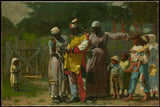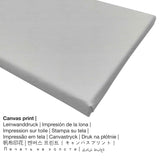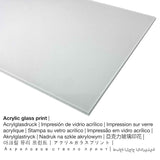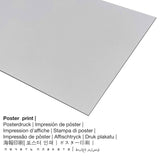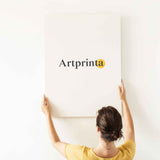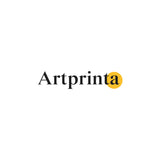Winslow Homer, 1877 - ejiji maka Carnival - mbipụta nka mara mma
Ụtụ gụnyere. Mbupu gbakọrọ na ndenye ọpụpụ.
Nchịkọta nke ngwaahịa ebipụta nka ọgbara ọhụrụ
Dressing for the Carnival is a painting painted by Winslow Homer in 1877. The beyond 140 year-old original version has the exact size: 20 x 30in (50,8 x 76,2cm) Framed: 31 9/16 × 41 1/2 × 5 7/8 in (80,1 × 105,4 × 14,9 cm) ma were ihe osise ese Usoro of mmanụ na kwaaji. Taa, mpempe nka a dị na mkpokọta nka dijitalụ nke Museumlọ ihe ngosi nka nke Obodo in New York City, New York, United States of America. We are pleased to mention that this public domain masterpiece is being supplied - courtesy of The Metropolitan Museum of Art, New York, Amelia B. Lazarus Fund, 1922. Moreover, the artpiece has the creditline: Amelia B. Lazarus Fund, 1922. Furthermore, alignment of the digital reproduction is landscape with an image ratio of 3: 2, meaning that the length is 50% longer than the width. The painter Winslow Homer was an artist, whose artistic style can mainly be classified as Realism. The artist was born in 1836 na Boston, Suffolk County, Massachusetts, United States ma nwụọ mgbe ọ dị afọ 74 na 1910 na Prouts Neck, Cumberland County, Maine, United States.
(© Nwebiisinka - nke Ụlọ ihe ngosi nka nke Obodo ukwu - www.metmuseum.org)
Produced one year after the official failure of Reconstruction—the withdrawal of federal troops from the South—Homer’s challenging subject evokes both the dislocation and endurance of African American culture that was a legacy of slavery. The central figure represents a Jonkonnu character, a Christmas holiday celebration once observed by enslaved blacks in Virginia and North Carolina. Rooted in the culture of the British West Indies, the festival blended African and English traditions. After the Civil War, aspects were incorporated into African American Independence Day celebrations, to which the painting’s original title, Sketch—4th of July in Virginia, referred.
Nkọwa gbasara akụkụ nka mbụ
| Aha eserese: | "Dressing for the Carnival" |
| Nchịkọta nke ọrụ nka: | sere |
| Okwu mkpokọta: | nkà nke oge a |
| Narị afọ nka: | 19th narị afọ |
| Emepụtara n'afọ: | 1877 |
| Ogologo afọ nka nka: | 140 afọ |
| Ọkara nke ihe osise izizi: | mmanụ na kwaaji |
| Akụkụ nke ihe osise izizi: | 20 x 30in (50,8 x 76,2cm) Framed: 31 9/16 × 41 1/2 × 5 7/8 in (80,1 × 105,4 × 14,9 cm) |
| Ụlọ ihe ngosi nka / mkpokọta: | Museumlọ ihe ngosi nka nke Obodo |
| Ebe ebe ngosi nka: | New York City, New York, Njikota Obodo Amerika |
| Weebụsaịtị nke ihe ngosi nka: | www.metmuseum.org |
| Licensedị ikike: | ngalaba ọha |
| Site n'aka: | Ụlọ ihe ngosi nka nke Metropolitan, New York, Amelia B. Lazarus Fund, 1922 |
| kreditline ọrụ nka: | Amelia B. Lazarọs Fund, 1922 |
Onye na-ese ihe
| Aha onye nka: | Winslow Homer |
| Aha utu aha: | הומר וינסלאו, homer w., w. Homer, Winslow Homer, Homer Winslow, Homer |
| okike onye nka: | nwoke |
| Nationality: | American |
| Ọrụ: | onye na-ese ihe |
| Obodo onye nka: | United States |
| Nhazi nke onye nka: | omenkà nke oge a |
| Ụdị nke onye na-ese ihe: | Ihe ngosi |
| Akwụsị: | 74 afọ |
| Amụrụ n'afọ: | 1836 |
| Obodo: | Boston, Suffolk County, Massachusetts, Njikota Obodo Amerika |
| Nwuru: | 1910 |
| Nwuru na (ebe): | Prouts Neck, Cumberland County, Maine, Njikota Obodo Amerika |
Họrọ nhọrọ akụrụngwa gị
N'ime menu ndọpụta ngwaahịa ị nwere ike ịhọrọ ngwa na nha nke nhọrọ gị. Ị nwere ike ịhọrọ n'ime nhọrọ nhazi ngwaahịa ndị a:
- Mbipụta ọla (aluminium dibbond): Aluminium Dibond prints are prints on metal with an impressive effect of depth. The bright and white sections of the artpiece shine with a silky gloss but without glow. This direct print on aluminium is the most popular entry-level product and is a truly sophisticated way to display fine art reproductions, since it puts 100% of the viewer’s attention on the artwork.
- Akwụkwọ mmado na ihe kwaaji: Our poster print is a UV printed cotton canvas with a slightly rough texture on the surface. It is appropriate for placing the art replica with a special frame. Please keep in mind, that depending on the absolute size of the poster print we add a white margin of something between 2-6cm round about the artwork in order to facilitate the framing with your custom frame.
- Mbipụta kanvas: The printed canvas, which should not be mistaken with a real canvas painting, is an image printed from a UV direct printing machine. How can I hang a canvas on my wall? A canvas print has the advantage of being relatively low in weight, which implies that it is easy to hang up your Canvas print without the support of extra wall-mounts. A canvas print is suited for all kinds of walls.
- Mbipụta enyo acrylic: An acrylic glass print, which is often referenced as a print on plexiglass, will turn the original work of art into brilliant home décor. With an acrylic glass art print contrasts as well as smaller color details will be visible with the help of the fine tonal gradation of the picture.
Ngwaahịa a
| Nkewa edemede: | nka nka |
| Mmeputakwa: | dijitalụ mmeputakwa |
| Usoro mmepụta: | mbipụta dijitalụ |
| Ihe ngosi: | Germany |
| Stockdị ngwaahịa: | a na-achọ |
| Eji ngwaahịa emebere: | ihe ndozi mgbidi, mgbidi gallery |
| Ndozi onyonyo a: | usoro odida obodo |
| Oke akụkụ onyonyo: | ogologo: obosara - 3: 2 |
| Mmetụta nke oke akụkụ: | ogologo bụ 50% ogologo karịa obosara |
| Ụdị ihe dị iche iche dị: | akwụkwọ mmado (akwụkwọ kwaaji), mbipụta ọla (aluminium dibond), mbipụta iko acrylic (nke nwere ezigbo mkpuchi iko), mbipụta akwụkwọ. |
| Nhọrọ nha nke akwa akwa n'elu etiti ihe na-agbatị (mbipụta kwaaji): | 30x20cm - 12x8", 60x40cm - 24x16", 90x60cm - 35x24", 120x80cm - 47x31" |
| Mbipụta iko acrylic (nwere ezigbo mkpuchi iko) nhọrọ nha: | 30x20cm - 12x8", 60x40cm - 24x16", 90x60cm - 35x24", 120x80cm - 47x31" |
| Mpempe akwụkwọ mmado (akwụkwọ kwaaji) nha: | 60x40cm - 24x16", 90x60cm - 35x24", 120x80cm - 47x31" |
| Mpempe aluminom (aluminium dibond ihe) nha: | 30x20cm - 12x8", 60x40cm - 24x16", 90x60cm - 35x24", 120x80cm - 47x31" |
| ụba: | enweghị etiti |
Nkwupụta iwu: We try the best we can in order to describe our art products in as much detail as possible and to demonstrate them visually on the various product detail pages. Although, the tone of the print materials and the imprint might differ slightly from the image on the monitor. Depending on the screen settings and the quality of the surface, colors can unfortunately not be printed as realistically as the digital version. Considering that all our fine art prints are processed and printed by hand, there may as well be slight discrepancies in the motif's exact position and the size.
© nwebiisinka, www.artprinta.com (Artprinta)

